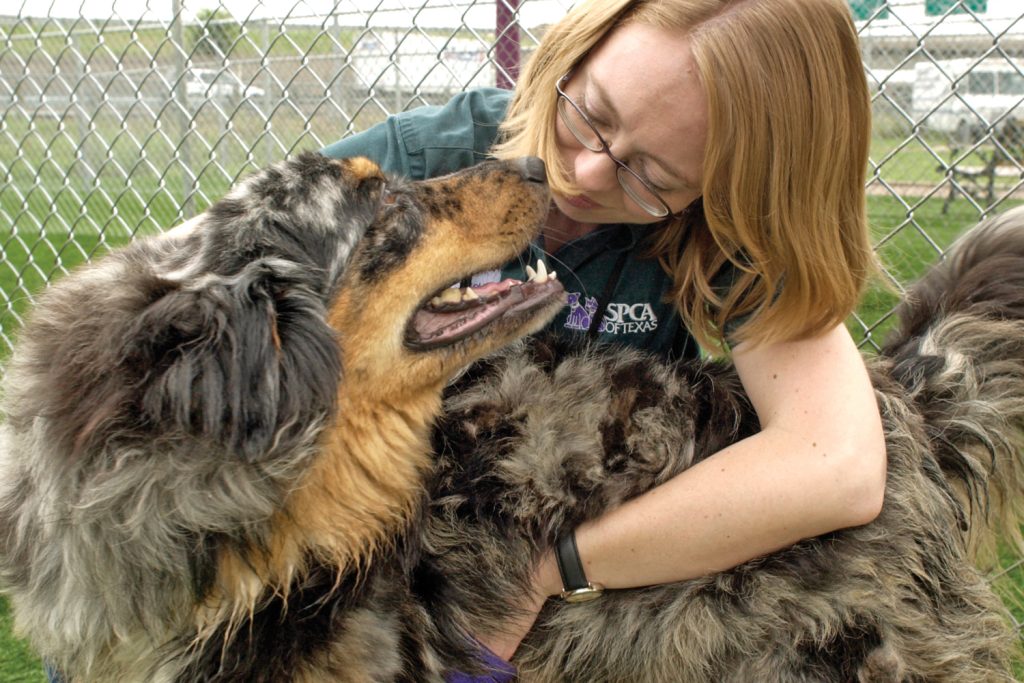How the Presence of Pets Contributes to the Well-Being of Healthcare Professionals in Stressful Work Environments

The Transformative Impact of Pets in Healthcare Environments
The role that pets play in healthcare environments often goes unacknowledged, yet these furry companions offer essential support that can significantly enhance the experience of healthcare professionals and patients alike. In the high-pressure world of healthcare, where professionals frequently grapple with long hours and emotional fatigue, the presence of animals acts as a powerful antidote to stress. A deeper examination reveals how these animals not only bridge the gap between human emotions but also influence overall workplace morale.
Numerous studies highlight the benefits of pet interaction. For instance, research has shown that simply petting a dog or cat can lead to a noticeable reduction in cortisol levels, the hormone primarily associated with stress. This simple act can transform an overwhelming workday into a more manageable one. Beyond physical stress reduction, pets also work wonders in enhancing emotional well-being. They have the ability to trigger the release of serotonin and dopamine, neurotransmitters crucial for elevating mood. The result is a workforce that feels more emotionally buoyed, better equipped to handle the challenges that may come their way.
The relevance of pets in healthcare settings is particularly pronounced in countries like Nigeria, where healthcare professionals often face systemic challenges, including resource shortages and overwhelming patient loads. Here, pets can become a symbol of comfort and resilience. The cultural connection to animals—whether it is the loyal dog often found in households or the serene presence of a cat—can help foster a sense of community among healthcare staff. For instance, in bustling urban hospitals where nurses and doctors work long shifts, having a designated therapy animal can ignite spontaneous moments of joy and laughter, reinforcing teamwork and camaraderie among staff members.
Moreover, initiatives such as pet therapy programs have the potential to revolutionize the workplace atmosphere in healthcare settings. These programs can enhance not just the resilience of healthcare personnel but also improve the quality of care provided to patients. When staff members feel more relaxed and supported, their interactions with patients tend to be warmer and more compassionate. For example, a hospital that implements a successful pet therapy program could observe heightened patient satisfaction and faster recovery times as healthcare professionals operate at elevated levels of morale and motivation.
In conclusion, harnessing the inherent benefits of pets in healthcare settings could pave the way for a more supportive and effective workplace. By embedding animal companionship into the fabric of healthcare culture, organizations can not only safeguard the well-being of their staff but also elevate the standard of patient care. As more facilities in Nigeria and beyond begin to recognize the transformative potential of pets, it’s essential to consider the ways in which these animals can contribute to the broader mission of fostering healthier environments for both healthcare providers and patients.

CHECK OUT: Click here to explore more
The Science Behind Pets and Stress Relief
In the intricate dance of healthcare, where professionals navigate endless responsibilities and emotional challenges, the presence of pets emerges as an unexpected yet profoundly effective ally. The science backing the bond between humans and animals reveals that integrating pets into healthcare settings can lead to substantial mental and emotional benefits for professionals. One cornerstone of this relationship is the concept of biophilia, the innate human affinity for nature and living beings, which can be harnessed to bolster well-being in high-stress environments.
A comprehensive review of studies illustrates how animal companionship significantly diminishes anxiety levels among healthcare workers. Research published in the Journal of Health Psychology indicates that engaging with pets can lower blood pressure and heartbeat rates during stressful periods, creating a calming effect that can last beyond the interaction. Such physiological changes yield a more tranquil environment, directly opposing the chaotic atmosphere often experienced in hospitals.
Moreover, the mental benefits of having pets around are compelling. The presence of animals can create pockets of joy and laughter amidst demanding workdays, helping alleviate the weight of emotional burnout that many healthcare professionals face. Regular interactions with pets lead to an increase in feelings of happiness and reduce symptoms of depression among staff. To illustrate this transformative dynamic, consider the following benefits that pets bring to healthcare professionals:
- Enhanced Mood: The simple sight of a wagging tail or the gentle purr of a cat can uplift spirits and foster a positive attitude among exhausted staff.
- Reduced Anxiety and Stress: Interaction with pets has been shown to lower anxiety indicators, allowing healthcare workers to regain focus and composure.
- Improved Team Cohesion: Pets serve as a common ground for staff, encouraging interactions and collaboration, ultimately enhancing teamwork.
- Greater Work Satisfaction: The presence of animals can lead to a more enjoyable workplace, boosting long-term job satisfaction among healthcare providers.
In Nigeria, where healthcare continues to face a myriad of challenges, including high patient-to-doctor ratios and limited resources, the potential benefits of pet companionship cannot be understated. For many healthcare professionals operating in urban centers like Lagos or Abuja, where the demands are relentless, the companionship of pets can serve as a crucial reminder of resilience and comfort. Implementing initiatives to integrate trained therapy animals in hospitals can foster a culture of support and wellness that may otherwise be absent.
As healthcare institutions increasingly acknowledge the mental health needs of their workforce, exploring the integration of pets into work environments could represent a significant paradigm shift. By understanding the intricate benefits pets bring, healthcare employers may not only safeguard the emotional health of their providers but also promote a culture that champions holistic care for both staff and patients alike.
| Advantages of Pet Presence | Detailed Insights |
|---|---|
| Emotional Support | Pets provide unwavering emotional support, helping healthcare professionals cope with stress and anxiety, often created by high-pressure environments. |
| Stress Reduction | Interacting with pets can significantly lower cortisol levels, leading to improved mental clarity and focus during demanding shifts. |
| Motivation and Engagement | Pets enhance motivation by providing a sense of routine and caregiving, which can lead to greater job satisfaction. |
| Social Connections | Pets can help forge connections among colleagues, decreasing feelings of isolation and fostering a supportive workplace community. |
Incorporating pets into the daily lives of healthcare professionals can lead to a dramatic enhancement in their overall well-being. The emotional support pets offer is unparalleled, often acting as a balm for the mental strain associated with their demanding roles. Additionally, the act of petting a dog or cuddling with a cat has been shown to release oxytocin, a hormone linked to positive emotions. Such interactions not only lower cortisol levels, reducing stress, but they also invite engagement and motivation within the workplace. The routine of caring for a pet mirrors the caregiving roles healthcare professionals embody, reinforcing their purpose and improving job satisfaction. As well, pets serve a social function; they can be a catalyst for conversation, fostering camaraderie among staff members and contributing to a supportive work environment. Thus, the presence of pets is not just a luxury, but a potentially transformative element in enhancing the mental health of those serving in high-stress healthcare settings.
YOU MAY ALSO LIKE: Read read another article
The Role of Therapy Animals in Healthcare Settings
As the healthcare sector seeks innovative solutions to combat stress and enhance the well-being of its workforce, the role of therapy animals has gained growing recognition. Unlike pets that serve merely as companions, therapy animals are trained to provide comfort and emotional support. The introduction of therapy animal programs in hospitals and clinics can be a game-changer for healthcare professionals grappling with fatigue and emotional distress. Studies have demonstrated that even brief interactions with therapy animals can lead to immediate improvements in mental health metrics, prompting healthcare organizations to consider such initiatives seriously.
One remarkable case in Nigeria involved a pilot program that introduced therapy dogs to a leading hospital in Lagos. Feedback from healthcare providers indicated a dramatic reduction in anxiety levels during disheartening moments common in their profession. The therapy dogs became symbols of hope, creating a bridge between sorrow and solace for an overburdened staff. Programs like these not only serve to relieve stress but also contribute to greater resilience among healthcare professionals, enabling them to better navigate daily challenges.
Building Empathy and Patient Relationships
The presence of pets, particularly therapy animals, enhances not only the well-being of healthcare professionals but also facilitates deeper connections with patients. As mentioned in the Journal of Clinical Nursing, therapy animals can foster a compassionate culture largely absent in pressured environments. When healthcare providers engage with animals, they often find it easier to empathize with their patients, ultimately leading to improved patient care and experiences.
In Nigeria, where healthcare workers frequently deal with the emotional weight of patient suffering, the introduction of therapy animals can help improve doctors’ and nurses’ empathic responses. This essential skill in patient care is often compromised under stress, but the presence of a soothing animal can create a more compassionate space. The display of affection from animals and the calming aura they project have been shown to resonate with the psychological needs of both staff and patients.
Practical Implementation of Pet Programs
Implementing programs for integrating pets into healthcare environments does not require extensive resources but rather a structured approach. Hospitals in urban areas of Nigeria can collaborate with local animal welfare organizations to train therapy animals, focusing on specific skills tailored to the healthcare environment. Staff training on understanding and interacting with these animals also becomes integral, enabling healthcare professionals to make the most of these interventions. Many facilities worldwide have initiated similar programs with measurable success, suggesting that a thoughtful piloting phase could pave the way for broader acceptance in Nigeria.
Moreover, hospitals can hold events where staff can bring their pets to work on designated days, creating opportunities for stress-relief sessions and informal interactions among colleagues. Such initiatives promote mental wellness while fostering camaraderie, thereby improving workplace morale.
In summary, the incorporation of pets and therapy animals into the healthcare framework holds enormous potential to enhance the well-being of healthcare professionals in stressful work environments. By leveraging the unique bond that exists between humans and animals, organizations could cultivate healthier, more engaged healthcare providers—radiating this positivity through to patient care and institutional culture.
YOU MAY ALSO LIKE: Read read another article
Conclusion
The presence of pets and therapy animals in healthcare environments offers a transformative approach to addressing the mounting stress faced by healthcare professionals. Not only do these animals serve as sources of comfort and emotional support, but they also enhance the resilience of those who often grapple with the emotional burdens of their roles. By fostering a more compassionate atmosphere, therapy animals enable healthcare providers to reconnect with their empathetic instincts, leading to improved patient care and overall satisfaction.
As evidenced by various pilot programs, including those in Nigeria, the implementation of structured pet initiatives can yield significant improvements in mental health, resilience, and workplace culture. Such programs do not require extensive resources but rather a thoughtful integration of animal-assisted therapies, staff training, and community partnerships. By capitalizing on the unique bond between humans and animals, healthcare organizations can create a support system that enhances the well-being of their workforce.
Looking ahead, embracing the presence of pets in healthcare settings represents an innovative solution to a pervasive issue in medical fields. Encouraging collaboration between hospitals, animal welfare organizations, and healthcare professionals could pave the way for a healthier, more engaged workforce while enriching the patient experience. Indeed, prioritizing the emotional well-being of healthcare providers through the integration of animal companionship may well be the key to sustaining a resilient healthcare system in Nigeria and beyond.


